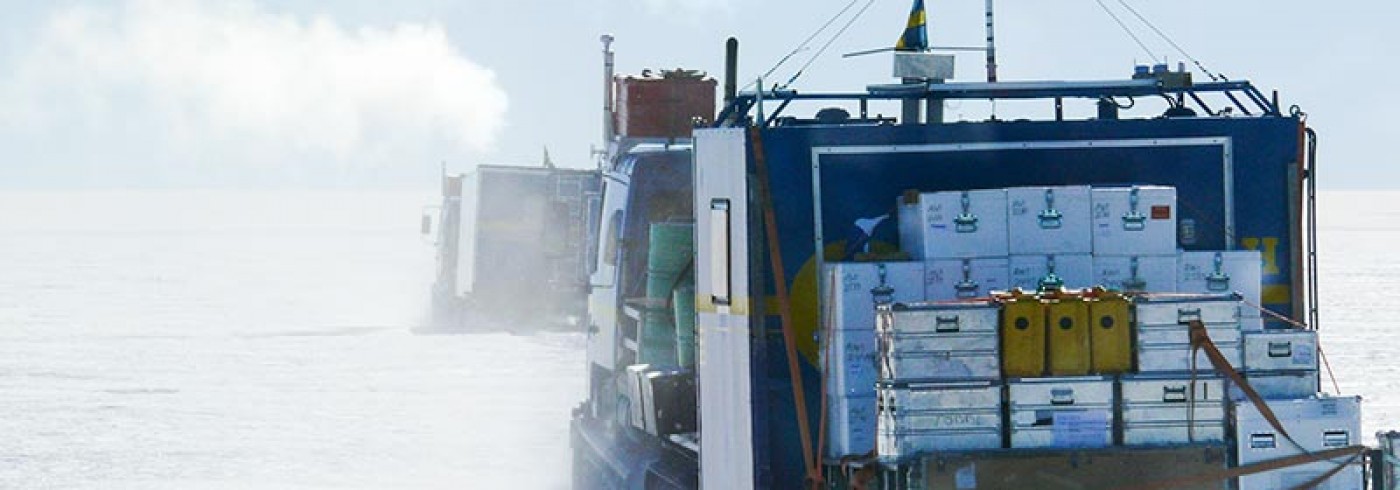At the same time, four Japanese tracked vehicle traveled in the opposite direction. The convoys met and exchanged two persons and some scientific equipment, in order to get the same data acquisition from the whole traverse.
Both of the convoys manned scientists from respectively countries, and they conducted:
- surface snow sampling
- aerosol sampling
- snow radar soundings
- internal ice layers in top 1 000 m (radar)
- depth soundings (subglacial lakes and landforms)
- GPS mapping of surface topography and absolute positioning
JASE was a Japanese-Swedish contribution to the International Polar Year. In order to carry out the expedition, a good and function technique and logistic was essential. The Swedish Polar Research Secretariat was in charge of the Swedish contribution to operations and logistics. The research planning was carried out at Swedish universities and research was funded mainly from the Swedish Research Council. Japanese logistics and science planning was governed by the National Institute of Polar Research. The tracked vehicles were equipped with scientific instruments for sampling and monitoring. The science team carried out studies in the area where previous drilled ice cores had been taken, that gave valuable information about the climate.
Principal investigators
Per Holmlund
Stockholm University
Dr Shuji Fujita
National Institute of Polar Research, Japan

